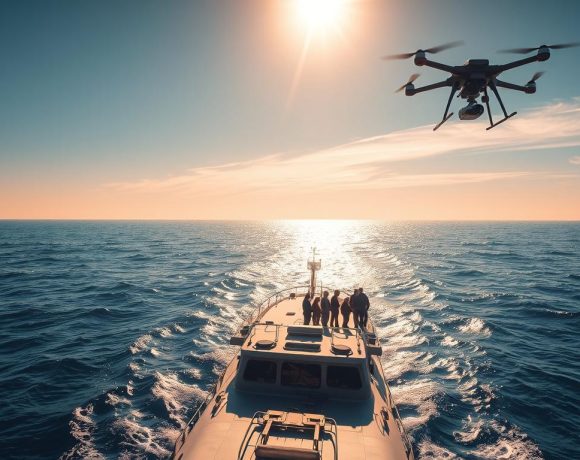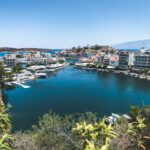Marine Ecology News Digest – September 2025

Oceans Under Pressure
September opened with sobering news: scientists confirmed that global ocean acidity has reached a new critical threshold. Measurements now show surface pH values that many species can no longer tolerate for long. For creatures that build shells or skeletons — corals, oysters, plankton — this chemical shift makes life harder with every passing year. Researchers describe the situation as “failing a planetary health check,” a sign that the ocean’s buffering capacity is slipping away.
At the same time, governments took a major step forward. After years of negotiation, the High Seas Treaty finally met the number of ratifications needed to enter into force early next year. It’s the first global legal framework to protect waters beyond national borders — covering almost two-thirds of the ocean. The treaty will allow countries to create protected areas, conduct environmental impact assessments, and share the benefits of genetic resources found in the deep sea.
Still, ratification is the easy part; implementing and enforcing it will be the challenge. Funding, surveillance, and coordination with existing fishing and mining regimes remain unresolved.
In Britain, a very different kind of policy decision drew criticism. The government announced that bottom trawling — one of the most destructive fishing practices for seabed habitats — would continue in many marine protected areas, with bans applied only where “specific features” were at risk. Conservation groups called the move a missed opportunity, warning that paper protection without action changes little for the ecosystems beneath.
Species, Discoveries, and Disasters
Deep-Sea Discoveries
September reminded us that the ocean still holds plenty of secrets. Marine biologists described a new deep-sea coral, Iridogorgia chewbacca, its long, hair-like branches inspiring the Star Wars-inspired name. Found at depths greater than four hundred metres in the western Pacific, the coral expands the known diversity of gorgonian species and hints at how little we still know about life below the photic zone.
Elsewhere, researchers identified three new species of snailfish living in deep, cold trenches. One of them — a pale pink fish covered in tiny bumps — has already become a favourite among scientists studying adaptation to pressure and darkness.
Whale Entanglements and Strandings
In eastern Australia, whale entanglements reached record levels. Twelve humpbacks were caught in shark-control nets this year, roughly half again as many as normal. Most were migrating mothers with calves. Warmer waters and shifting currents appear to be drawing whales closer to shore, increasing the likelihood of encounters with fishing gear and nets. Marine groups are now calling for non-lethal alternatives such as smart drumlines and seasonal closures.

Meanwhile, along the coast of Crete, five Cuvier’s beaked whales were found stranded, one still alive when rescuers arrived. These elusive animals are among the deepest-diving mammals known, and they are particularly sensitive to underwater noise. Investigators are examining whether naval sonar exercises may have contributed.
Pollution and Algal Blooms
Off the Indian port of Kochi, scientists monitoring the MSC Elsa 3 wreck found lingering oil and heavy-metal pollution months after the incident. Water samples showed elevated nickel, lead, and hydrocarbon levels, and nearby plankton communities had shifted toward more tolerant species — a typical sign of chronic contamination. Fishermen reported smaller catches and discoloured water, underlining how a single wreck can reshape a coastal ecosystem.
Further south, South Australia continued to battle one of the longest harmful-algal blooms in its history. The bloom, which began in March, has persisted through the winter, turning stretches of coastline an opaque reddish-brown and killing fish, crustaceans, and cuttlefish. Emergency teams have installed bubble curtains around spawning grounds to save remaining eggs, but scientists warn that warmer seas and nutrient runoff mean such events could become seasonal fixtures rather than anomalies.
Monitoring the Changing Ocean
The release of this year’s Copernicus Ocean State Report painted a clear picture: marine change is accelerating. Sea-surface temperatures, deoxygenation, and acidification are all trending upward. Extreme events such as marine heatwaves now cover larger areas and last longer. The report’s authors highlight a shift from gradual change to sudden, non-linear impacts — a pattern that challenges both prediction and policy.
Technology is racing to keep pace. New advances in autonomous marine robotics were announced this month, using artificial-intelligence perception systems that can identify fish, corals, or pollution plumes in real time, even in murky water. Another prototype demonstrated a coordinated swarm of drones capable of modelling and containing oil spills faster than human teams. While such systems remain experimental, they mark the beginning of a more responsive style of ocean monitoring — one that observes and acts simultaneously.
Ice, Melt, and the Arctic Edge
As the CONTRASTS Expedition in the Arctic wrapped up, scientists shared preliminary results that underline how quickly the polar seascape is changing. Three categories of ice — seasonal, first-year, and multiyear — showed dramatically different melt patterns. The oldest ice, once thought relatively stable, is thinning from both above and below.

Perhaps the most striking finding was biological: ice-algae communities, which form the foundation of polar food webs, were largely absent in the regions studied between Greenland and Svalbard. In their place, microbial mats and small zooplankton have taken hold, shifting the base of the Arctic food chain. These subtle but cascading changes could reshape everything from fish migration to carbon uptake in coming years.
Local Action and Global Frames
September also brought encouraging stories of regional leadership. African coastal states, from Namibia to Kenya, have begun coordinating marine-protected-area networks and cracking down on illegal fishing through joint patrols. Their combined exclusive-economic zones now represent one of the largest contiguous blocks of protected tropical waters on Earth. These efforts illustrate that decisive regional cooperation can move faster than global negotiation — a practical counterweight to slow international bureaucracy.
Citizen-science initiatives are flourishing as well. Volunteer divers in the Mediterranean documented coral bleaching and plastic debris via an open-data app, while schools in Japan’s Seto Inland Sea joined a programme to monitor seagrass recovery using underwater drones borrowed from local universities. Such projects blend education with data collection, bridging the gap between research and public awareness.
Reflections
As September closes, a few themes stand out.
1. The chemistry of the ocean is changing faster than its inhabitants can adapt.
The new acidity threshold is not just a statistic — it represents physiological stress cascading from plankton to whales. The ocean remains a powerful buffer, but that buffer is thinning.
2. Legal progress is real but fragile.
The High Seas Treaty is a landmark achievement, yet without enforcement and sustained funding, it risks being symbolic. The coming year will test whether governments can turn signatures into safeguards.
3. Technology offers sharper eyes, not easy fixes.
AI and robotics expand what we can measure and manage, but they cannot substitute for reducing emissions, pollution, and destructive fishing. Observation is only useful if it prompts action.
4. Life continues to surprise.
New corals, new fish, rediscovered species — proof that the ocean’s story is far from finished. Even in a time of crisis, discovery keeps curiosity alive.
5. Local initiatives matter.
From African patrols to Japanese classrooms, the energy for marine protection is increasingly bottom-up. Global frameworks provide structure; local commitment delivers results.
Looking Ahead
The coming months will determine whether the pledges made this year translate into tangible improvements. Ocean governance is finally gaining momentum, yet climate trends continue to erode the biological foundations that sustain it. September 2025, then, stands as both warning and opportunity — a reminder that the sea is not a distant frontier but the living heart of our planet, absorbing our excesses, feeding our economies, and quietly recording every decision we make.















